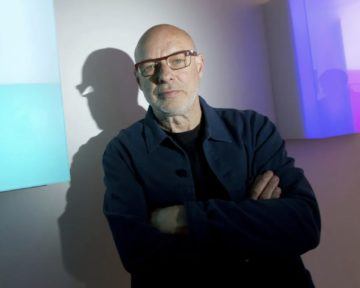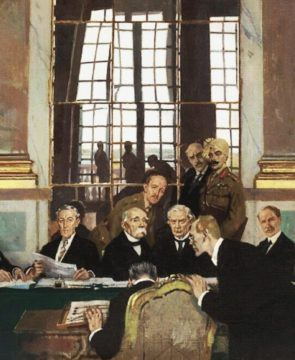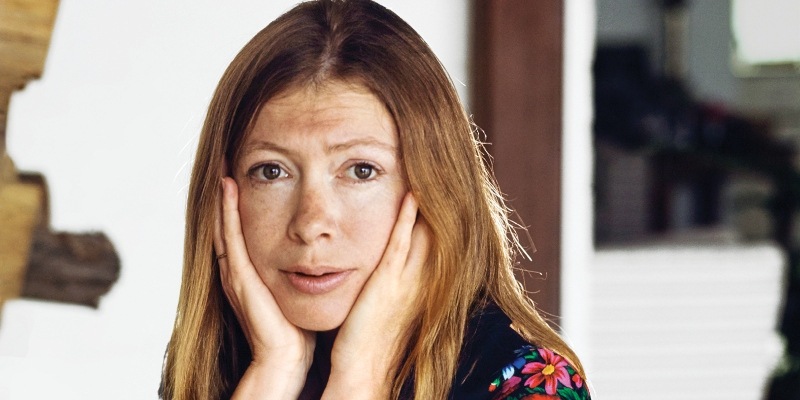Alex Ross at The New Yorker:
 In brief, the circumstances were these: Heine, a master of caustic wit and raw heartbreak, was in his early thirties and had found fame with his “Buch der Lieder” (“Book of Songs”), a collection of outwardly Romantic lyric poems with an ironic undertow that often escaped early readers. Platen bore a noble name—Count Platen-Hallermünde—but had grown up without financial advantages, serving in the military before turning to literature. He had won notice for finespun odes, sonnets, and adaptations of the Persian ghazal. Karl Immermann, a friend of Heine’s, had made cracks about pretentious poets who “vomit Ghaselen”; Heine quoted Immermann’s lines in one of his volumes of “Reisebilder” (“Travel Pictures”) that detoured into politics and literature. Platen, irrationally incensed by this run-of-the-mill literary sniping, struck back in a pseudo-Aristophanic comedy titled “The Romantic Oedipus,” deploying anti-Semitic epithets against Heine. The latter, in his next travelogue, “The Baths of Lucca,” unleashed a homophobic evisceration of Platen—which was widely viewed as overkill and caused considerable damage to Heine’s career. Platen, who already felt alienated from Germany and was based in Italy, said no more. He died of cholera six years later, in Syracuse, Sicily.
In brief, the circumstances were these: Heine, a master of caustic wit and raw heartbreak, was in his early thirties and had found fame with his “Buch der Lieder” (“Book of Songs”), a collection of outwardly Romantic lyric poems with an ironic undertow that often escaped early readers. Platen bore a noble name—Count Platen-Hallermünde—but had grown up without financial advantages, serving in the military before turning to literature. He had won notice for finespun odes, sonnets, and adaptations of the Persian ghazal. Karl Immermann, a friend of Heine’s, had made cracks about pretentious poets who “vomit Ghaselen”; Heine quoted Immermann’s lines in one of his volumes of “Reisebilder” (“Travel Pictures”) that detoured into politics and literature. Platen, irrationally incensed by this run-of-the-mill literary sniping, struck back in a pseudo-Aristophanic comedy titled “The Romantic Oedipus,” deploying anti-Semitic epithets against Heine. The latter, in his next travelogue, “The Baths of Lucca,” unleashed a homophobic evisceration of Platen—which was widely viewed as overkill and caused considerable damage to Heine’s career. Platen, who already felt alienated from Germany and was based in Italy, said no more. He died of cholera six years later, in Syracuse, Sicily.
more here.

 JANUARY 6 WAS SUPPOSED
JANUARY 6 WAS SUPPOSED  Stop me if you’ve heard this one: A Black man walks into a federal government office and says, “Give me a lot of money and I’ll build you a Black city.” And the government, to everyone’s surprise, says, “OK, here’s $14 million!” No? Most people haven’t. The story of Floyd McKissick’s dream, struggle and, ultimately, failure to build an American city on behalf of Black citizens is one of the greatest least-told stories in American history. In “Soul City,” Thomas Healy chronicles this tragically quixotic enterprise by McKissick, a civil rights activist turned capitalist, who attempted, beginning in 1969, to build “Soul City,” a Black-run city on a former slave plantation in rural North Carolina, close to Southern Klan country.
Stop me if you’ve heard this one: A Black man walks into a federal government office and says, “Give me a lot of money and I’ll build you a Black city.” And the government, to everyone’s surprise, says, “OK, here’s $14 million!” No? Most people haven’t. The story of Floyd McKissick’s dream, struggle and, ultimately, failure to build an American city on behalf of Black citizens is one of the greatest least-told stories in American history. In “Soul City,” Thomas Healy chronicles this tragically quixotic enterprise by McKissick, a civil rights activist turned capitalist, who attempted, beginning in 1969, to build “Soul City,” a Black-run city on a former slave plantation in rural North Carolina, close to Southern Klan country. I am just one of many artists who have been affected by a new McCarthyism that has taken hold amid a rising climate of intolerance in Germany. Novelist
I am just one of many artists who have been affected by a new McCarthyism that has taken hold amid a rising climate of intolerance in Germany. Novelist  The creature stretched, then clung upright against the tree with its sharp claws and began to groom. Its skin required some attention as it had, frankly, a lot of it. A membrane stretched from its neck via its hands and feet to its tail, a kite-like feature that distinguishes the colugo, once popularly known as the flying lemur, from other night gliders like the flying squirrel, which has a long tail that it uses to fan itself through the air. Because they don’t fly, nor use a tail to fan, colugos, with the logic of a hand glider launching from a hillside, typically climb high into a tree before attempting to glide. Still, their range is impressive. According to Miard they’ve been recorded gliding a full 150m, although hops of 30m or less are far more common.
The creature stretched, then clung upright against the tree with its sharp claws and began to groom. Its skin required some attention as it had, frankly, a lot of it. A membrane stretched from its neck via its hands and feet to its tail, a kite-like feature that distinguishes the colugo, once popularly known as the flying lemur, from other night gliders like the flying squirrel, which has a long tail that it uses to fan itself through the air. Because they don’t fly, nor use a tail to fan, colugos, with the logic of a hand glider launching from a hillside, typically climb high into a tree before attempting to glide. Still, their range is impressive. According to Miard they’ve been recorded gliding a full 150m, although hops of 30m or less are far more common. The Treaty of Versailles—a contract that changed the course of the century and beyond—has been all but forgotten in the public sphere and in popular discourse. As a result, few people think about the world we live in as being made by the Treaty. In fact, most don’t think about it at all.
The Treaty of Versailles—a contract that changed the course of the century and beyond—has been all but forgotten in the public sphere and in popular discourse. As a result, few people think about the world we live in as being made by the Treaty. In fact, most don’t think about it at all. Like many women in their 30s, I feel a certain nostalgic connection to Britney Spears. In high school, I remember watching her dizzying rise as America’s golden girl. Then came her public struggles and searing battering by the paparazzi and tabloids while I was in my early 20s. I have also felt a fascination with her unusual
Like many women in their 30s, I feel a certain nostalgic connection to Britney Spears. In high school, I remember watching her dizzying rise as America’s golden girl. Then came her public struggles and searing battering by the paparazzi and tabloids while I was in my early 20s. I have also felt a fascination with her unusual  What she was up against were, in short, warnings. These were most explicit each Lent and Easter. In April 1932, Eliot said he had gained so much that he could not give up his journey towards what he termed “reality”: as he put it in the Quartets, “human kind / Cannot bear very much reality.” The real thing lay beyond life, and he could no longer accept the kind of love that would mean giving that up. If he were to rank his two narratives, the supernatural did come first. Desire was evil, he believed, and talking to Hale more frankly than to anyone, he explained how difficult it was to fight this evil when he woke in the morning. When she notes his diminished expressiveness in the spring and summer of 1932, he explains this as a strategy, inseparable from unsatisfied desire. His typewriter stumbles, he crosses out and picks up the thought again with more deliberation, putting companionship before passion, then dependence, reverence and a protective instinct. He decides to label his feeling for her “respect.” True enough, though only one strand. He was not so earnest that he did not sometimes fix on her bathing costume and wavy hair.
What she was up against were, in short, warnings. These were most explicit each Lent and Easter. In April 1932, Eliot said he had gained so much that he could not give up his journey towards what he termed “reality”: as he put it in the Quartets, “human kind / Cannot bear very much reality.” The real thing lay beyond life, and he could no longer accept the kind of love that would mean giving that up. If he were to rank his two narratives, the supernatural did come first. Desire was evil, he believed, and talking to Hale more frankly than to anyone, he explained how difficult it was to fight this evil when he woke in the morning. When she notes his diminished expressiveness in the spring and summer of 1932, he explains this as a strategy, inseparable from unsatisfied desire. His typewriter stumbles, he crosses out and picks up the thought again with more deliberation, putting companionship before passion, then dependence, reverence and a protective instinct. He decides to label his feeling for her “respect.” True enough, though only one strand. He was not so earnest that he did not sometimes fix on her bathing costume and wavy hair.
 What is racial fraud and how is it possible? The answer would be clear enough, perhaps, if race were a biological reality. But the consensus seems to be that race is a social construction, a product of human ingenuity. So why can’t you choose to be any race you want?
What is racial fraud and how is it possible? The answer would be clear enough, perhaps, if race were a biological reality. But the consensus seems to be that race is a social construction, a product of human ingenuity. So why can’t you choose to be any race you want? Of course I stole the title for this talk from George Orwell. One reason I stole it was that I like the sound of the words: Why I Write. There you have three short unambiguous words that share a sound, and the sound they share is this:
Of course I stole the title for this talk from George Orwell. One reason I stole it was that I like the sound of the words: Why I Write. There you have three short unambiguous words that share a sound, and the sound they share is this: In January 2017, a lengthy proposal showed up at the offices of the
In January 2017, a lengthy proposal showed up at the offices of the  Have you ever felt uncomfortable sharing your opinion on politics — whether online or with friends? If so, you’re not alone. Americans are becoming increasingly cautious about sharing their political opinions. In a recent
Have you ever felt uncomfortable sharing your opinion on politics — whether online or with friends? If so, you’re not alone. Americans are becoming increasingly cautious about sharing their political opinions. In a recent  In the endless catalogue of British imperial atrocities, the unprovoked invasion of Tibet in 1903 was a minor but fairly typical episode. Tibetans, explained the expedition’s cultural expert, were savages, “more like hideous gnomes than human beings”. Thousands of them were massacred defending their homeland, “knocked over like skittles” by the invaders’ state-of-the-art machine guns. “I got so sick of the slaughter that I ceased fire,” wrote a British lieutenant, “though the General’s order was to make as big a bag as possible.” As big a bag as possible – killing inferior people was a kind of blood sport.
In the endless catalogue of British imperial atrocities, the unprovoked invasion of Tibet in 1903 was a minor but fairly typical episode. Tibetans, explained the expedition’s cultural expert, were savages, “more like hideous gnomes than human beings”. Thousands of them were massacred defending their homeland, “knocked over like skittles” by the invaders’ state-of-the-art machine guns. “I got so sick of the slaughter that I ceased fire,” wrote a British lieutenant, “though the General’s order was to make as big a bag as possible.” As big a bag as possible – killing inferior people was a kind of blood sport. By his own lights, Daniel Patrick Moynihan, ambassador, senator, sociologist, and itinerant American intellectual, was
By his own lights, Daniel Patrick Moynihan, ambassador, senator, sociologist, and itinerant American intellectual, was